Deepak Ranjan Nayak
SRMA-Mamba: Spatial Reverse Mamba Attention Network for Pathological Liver Segmentation in MRI Volumes
Aug 17, 2025Abstract:Liver Cirrhosis plays a critical role in the prognosis of chronic liver disease. Early detection and timely intervention are critical in significantly reducing mortality rates. However, the intricate anatomical architecture and diverse pathological changes of liver tissue complicate the accurate detection and characterization of lesions in clinical settings. Existing methods underutilize the spatial anatomical details in volumetric MRI data, thereby hindering their clinical effectiveness and explainability. To address this challenge, we introduce a novel Mamba-based network, SRMA-Mamba, designed to model the spatial relationships within the complex anatomical structures of MRI volumes. By integrating the Spatial Anatomy-Based Mamba module (SABMamba), SRMA-Mamba performs selective Mamba scans within liver cirrhotic tissues and combines anatomical information from the sagittal, coronal, and axial planes to construct a global spatial context representation, enabling efficient volumetric segmentation of pathological liver structures. Furthermore, we introduce the Spatial Reverse Attention module (SRMA), designed to progressively refine cirrhotic details in the segmentation map, utilizing both the coarse segmentation map and hierarchical encoding features. Extensive experiments demonstrate that SRMA-Mamba surpasses state-of-the-art methods, delivering exceptional performance in 3D pathological liver segmentation. Our code is available for public: {\color{blue}{https://github.com/JunZengz/SRMA-Mamba}}.
Mamba Guided Boundary Prior Matters: A New Perspective for Generalized Polyp Segmentation
Jul 02, 2025Abstract:Polyp segmentation in colonoscopy images is crucial for early detection and diagnosis of colorectal cancer. However, this task remains a significant challenge due to the substantial variations in polyp shape, size, and color, as well as the high similarity between polyps and surrounding tissues, often compounded by indistinct boundaries. While existing encoder-decoder CNN and transformer-based approaches have shown promising results, they struggle with stable segmentation performance on polyps with weak or blurry boundaries. These methods exhibit limited abilities to distinguish between polyps and non-polyps and capture essential boundary cues. Moreover, their generalizability still falls short of meeting the demands of real-time clinical applications. To address these limitations, we propose SAM-MaGuP, a groundbreaking approach for robust polyp segmentation. By incorporating a boundary distillation module and a 1D-2D Mamba adapter within the Segment Anything Model (SAM), SAM-MaGuP excels at resolving weak boundary challenges and amplifies feature learning through enriched global contextual interactions. Extensive evaluations across five diverse datasets reveal that SAM-MaGuP outperforms state-of-the-art methods, achieving unmatched segmentation accuracy and robustness. Our key innovations, a Mamba-guided boundary prior and a 1D-2D Mamba block, set a new benchmark in the field, pushing the boundaries of polyp segmentation to new heights.
SAM-Mamba: Mamba Guided SAM Architecture for Generalized Zero-Shot Polyp Segmentation
Dec 11, 2024



Abstract:Polyp segmentation in colonoscopy is crucial for detecting colorectal cancer. However, it is challenging due to variations in the structure, color, and size of polyps, as well as the lack of clear boundaries with surrounding tissues. Traditional segmentation models based on Convolutional Neural Networks (CNNs) struggle to capture detailed patterns and global context, limiting their performance. Vision Transformer (ViT)-based models address some of these issues but have difficulties in capturing local context and lack strong zero-shot generalization. To this end, we propose the Mamba-guided Segment Anything Model (SAM-Mamba) for efficient polyp segmentation. Our approach introduces a Mamba-Prior module in the encoder to bridge the gap between the general pre-trained representation of SAM and polyp-relevant trivial clues. It injects salient cues of polyp images into the SAM image encoder as a domain prior while capturing global dependencies at various scales, leading to more accurate segmentation results. Extensive experiments on five benchmark datasets show that SAM-Mamba outperforms traditional CNN, ViT, and Adapter-based models in both quantitative and qualitative measures. Additionally, SAM-Mamba demonstrates excellent adaptability to unseen datasets, making it highly suitable for real-time clinical use.
GS-Net: Global Self-Attention Guided CNN for Multi-Stage Glaucoma Classification
Sep 24, 2024



Abstract:Glaucoma is a common eye disease that leads to irreversible blindness unless timely detected. Hence, glaucoma detection at an early stage is of utmost importance for a better treatment plan and ultimately saving the vision. The recent literature has shown the prominence of CNN-based methods to detect glaucoma from retinal fundus images. However, such methods mainly focus on solving binary classification tasks and have not been thoroughly explored for the detection of different glaucoma stages, which is relatively challenging due to minute lesion size variations and high inter-class similarities. This paper proposes a global self-attention based network called GS-Net for efficient multi-stage glaucoma classification. We introduce a global self-attention module (GSAM) consisting of two parallel attention modules, a channel attention module (CAM) and a spatial attention module (SAM), to learn global feature dependencies across channel and spatial dimensions. The GSAM encourages extracting more discriminative and class-specific features from the fundus images. The experimental results on a publicly available dataset demonstrate that our GS-Net outperforms state-of-the-art methods. Also, the GSAM achieves competitive performance against popular attention modules.
* 5 pages, 3 figures
Backward-Forward Algorithm: An Improvement towards Extreme Learning Machine
Jul 29, 2019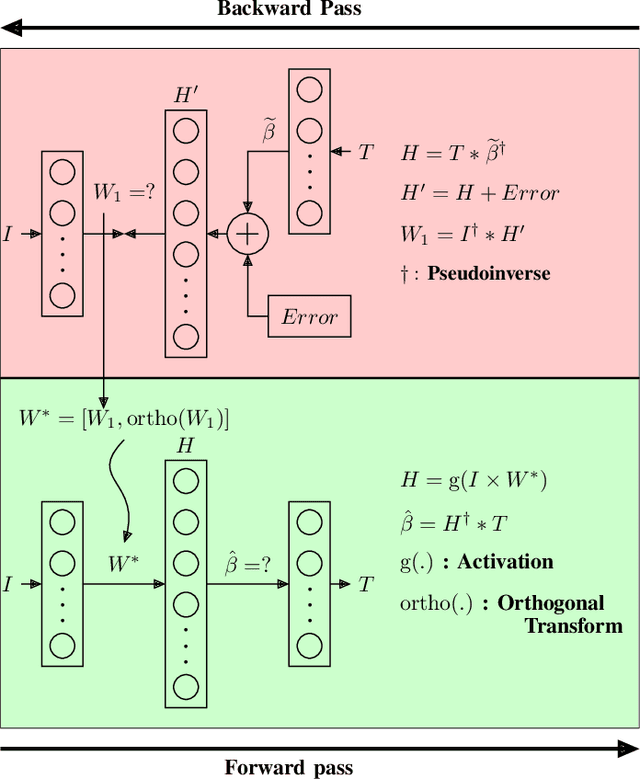

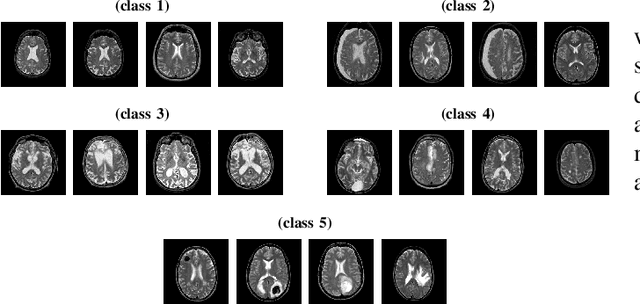
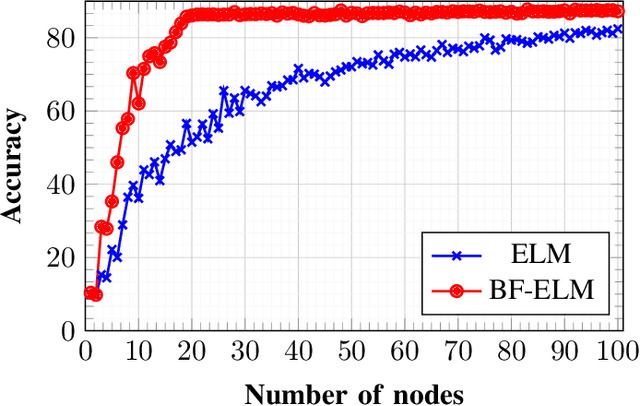
Abstract:Extreme learning machine (ELM), a randomized learning paradigm for a single hidden layer feed-forward network, has gained significant attention for solving problems in diverse domains due to its faster learning ability. The output weights in ELM are determined by an analytic procedure, while the input weights and biases are randomly generated and fixed during the training phase. The learning performance of ELM is highly sensitive to many factors such as the number of nodes in the hidden layer, the initialization of input weight and the type of activation functions in the hidden layer. Moreover, the performance of ELM is affected due to the presence of random input weight and the model suffers from ill posed problem. Hence, here we propose a backward-forward algorithm for a single feed-forward neural network that improves the generalization capability of the network with fewer hidden nodes. Here, both input and output weights are determined mathematically which gives the network its performance advantages. The proposed model provides an improvement over extreme learning machine with respect to the number of nodes used for generalization.
A Survey on Two Dimensional Cellular Automata and Its Application in Image Processing
Jul 29, 2014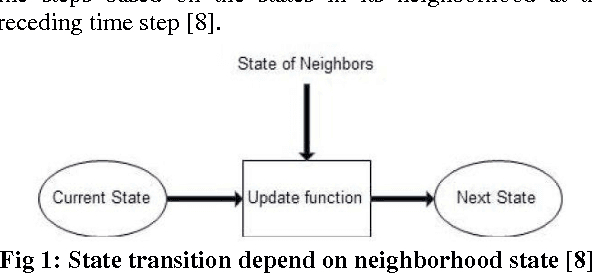

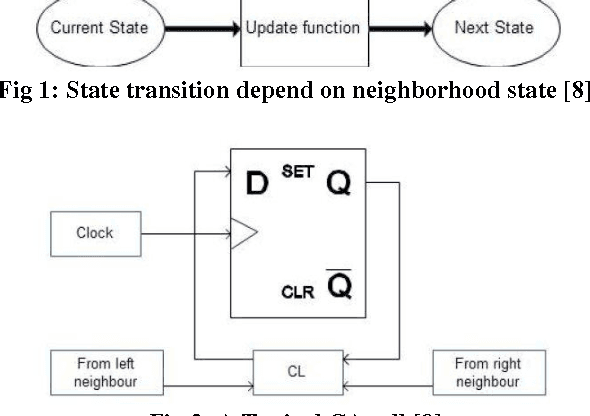
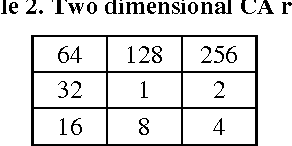
Abstract:Parallel algorithms for solving any image processing task is a highly demanded approach in the modern world. Cellular Automata (CA) are the most common and simple models of parallel computation. So, CA has been successfully used in the domain of image processing for the last couple of years. This paper provides a survey of available literatures of some methodologies employed by different researchers to utilize the cellular automata for solving some important problems of image processing. The survey includes some important image processing tasks such as rotation, zooming, translation, segmentation, edge detection, compression and noise reduction of images. Finally, the experimental results of some methodologies are presented.
A Cellular Automata based Optimal Edge Detection Technique using Twenty-Five Neighborhood Model
Feb 06, 2014
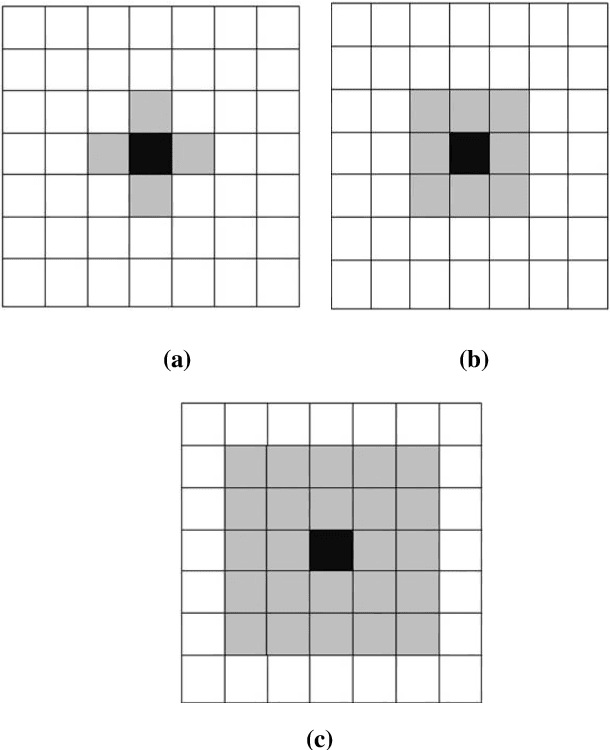
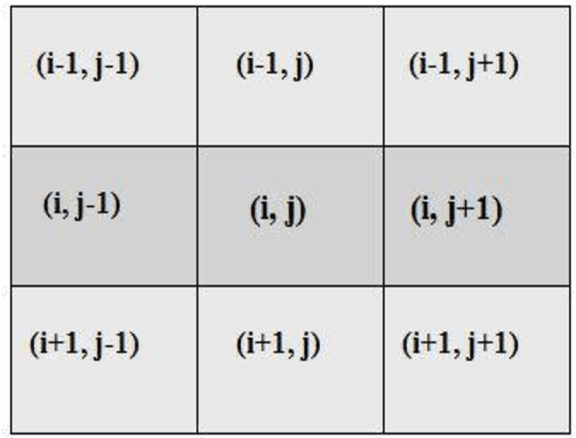

Abstract:Cellular Automata (CA) are common and most simple models of parallel computations. Edge detection is one of the crucial task in image processing, especially in processing biological and medical images. CA can be successfully applied in image processing. This paper presents a new method for edge detection of binary images based on two dimensional twenty five neighborhood cellular automata. The method considers only linear rules of CA for extraction of edges under null boundary condition. The performance of this approach is compared with some existing edge detection techniques. This comparison shows that the proposed method to be very promising for edge detection of binary images. All the algorithms and results used in this paper are prepared in MATLAB.
* 7 pages, 9 figures
An Efficient Edge Detection Technique by Two Dimensional Rectangular Cellular Automata
Dec 22, 2013

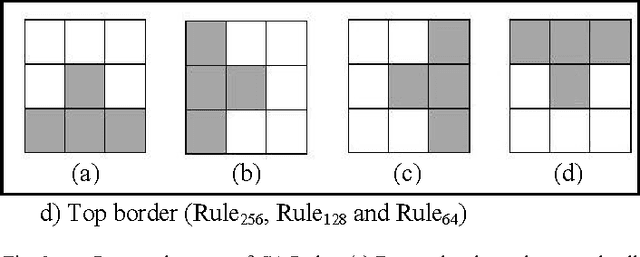

Abstract:This paper proposes a new pattern of two dimensional cellular automata linear rules that are used for efficient edge detection of an image. Since cellular automata is inherently parallel in nature, it has produced desired output within a unit time interval. We have observed four linear rules among 512 total linear rules of a rectangular cellular automata in adiabatic or reflexive boundary condition that produces an optimal result. These four rules are directly applied once to the images and produced edge detected output. We compare our results with the existing edge detection algorithms and found that our results shows better edge detection with an enhancement of edges.
 Add to Chrome
Add to Chrome Add to Firefox
Add to Firefox Add to Edge
Add to Edge